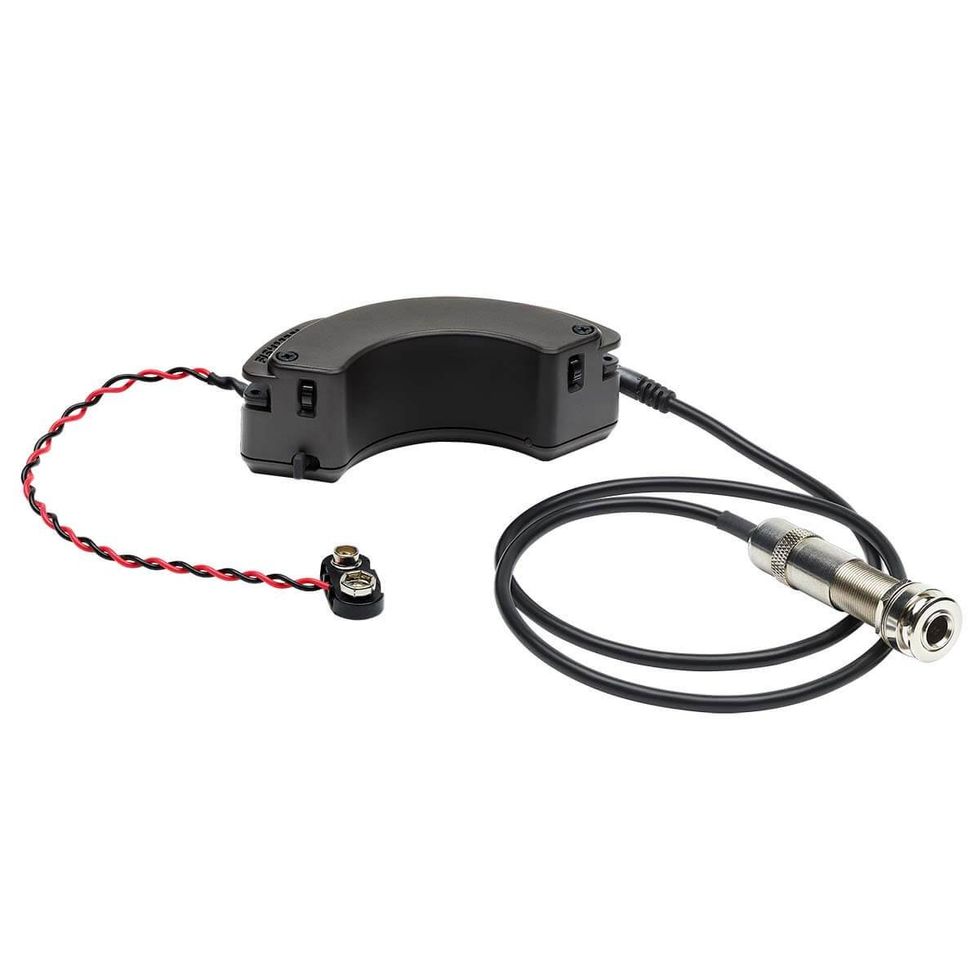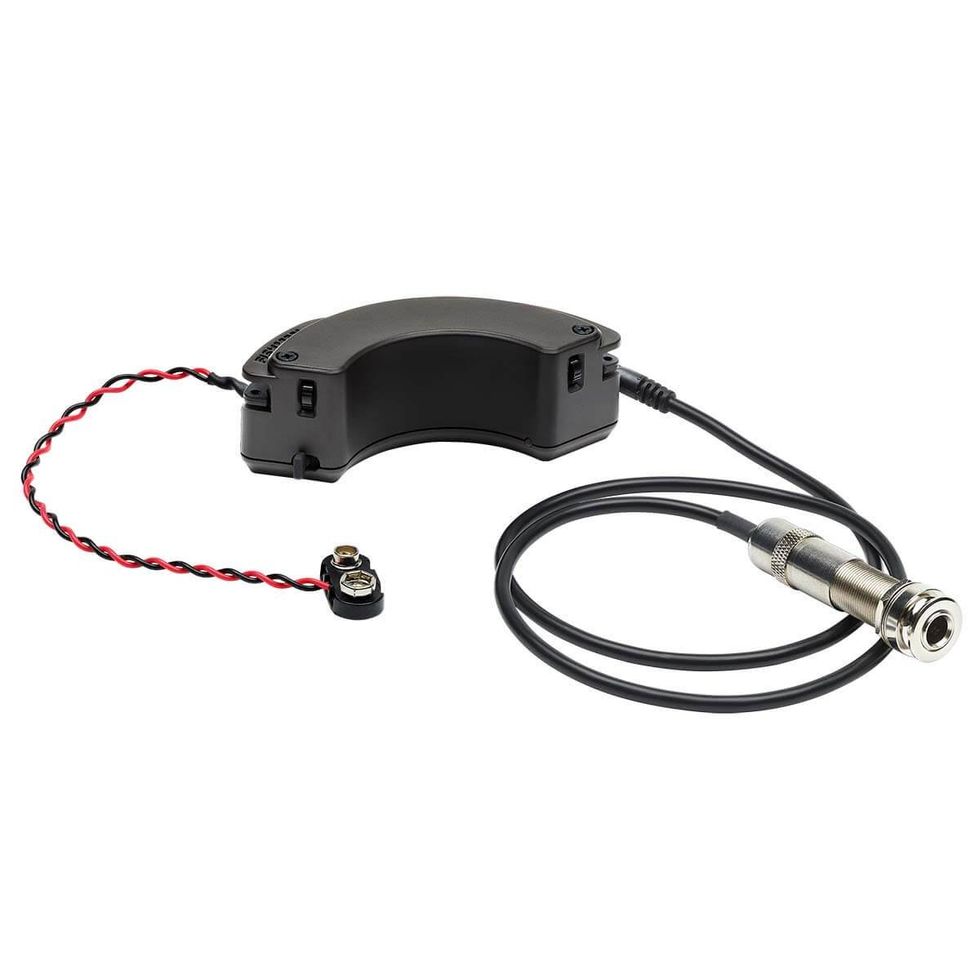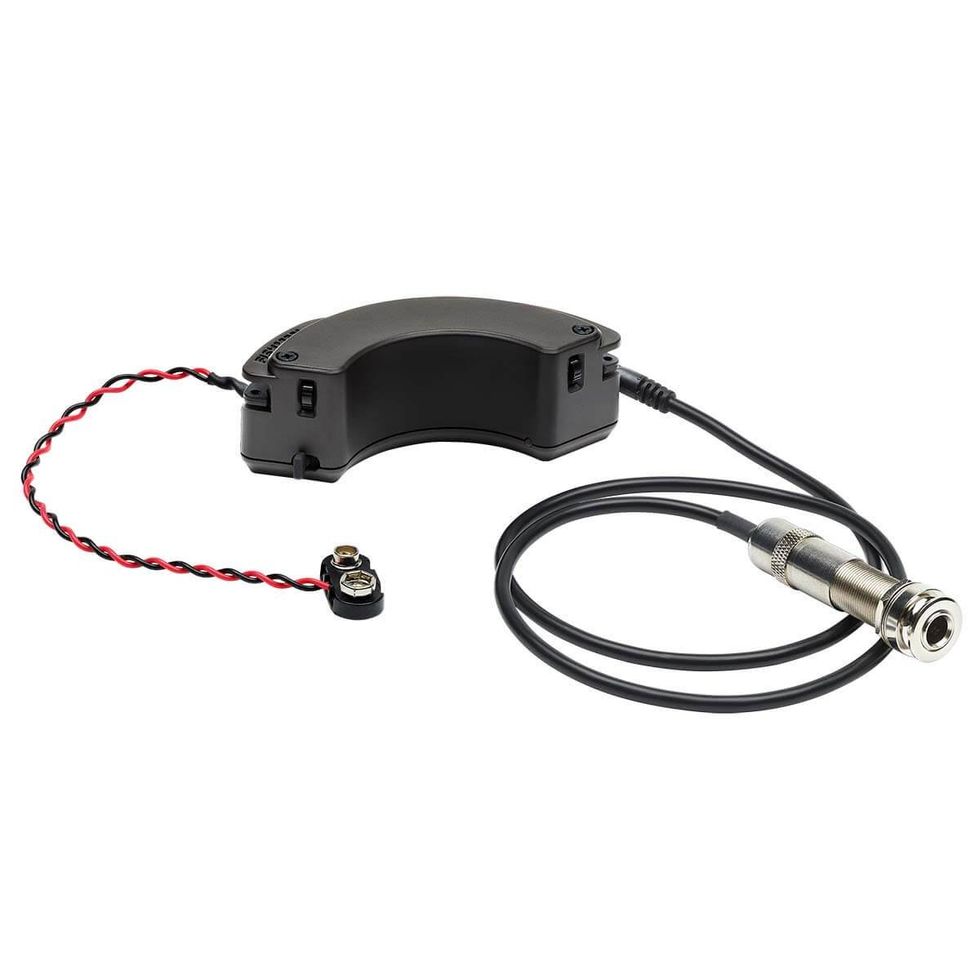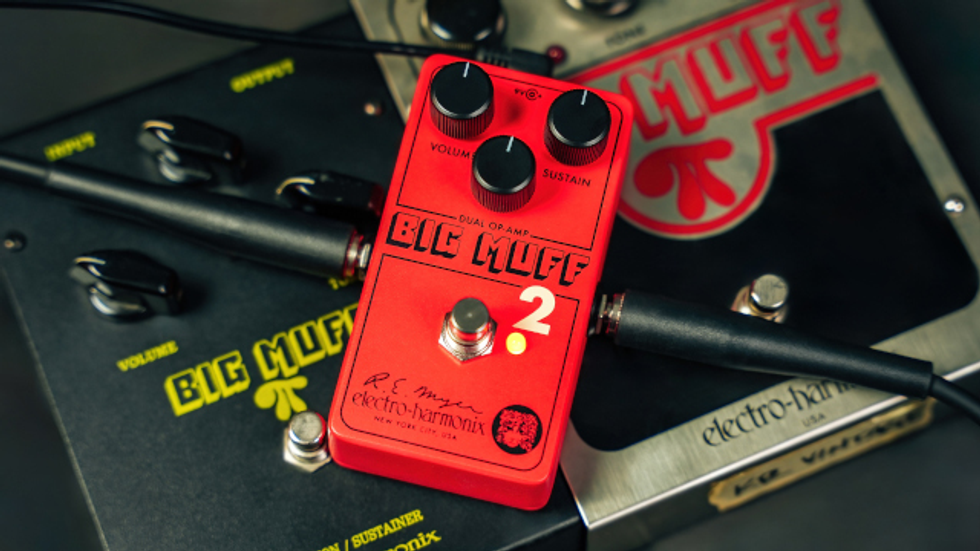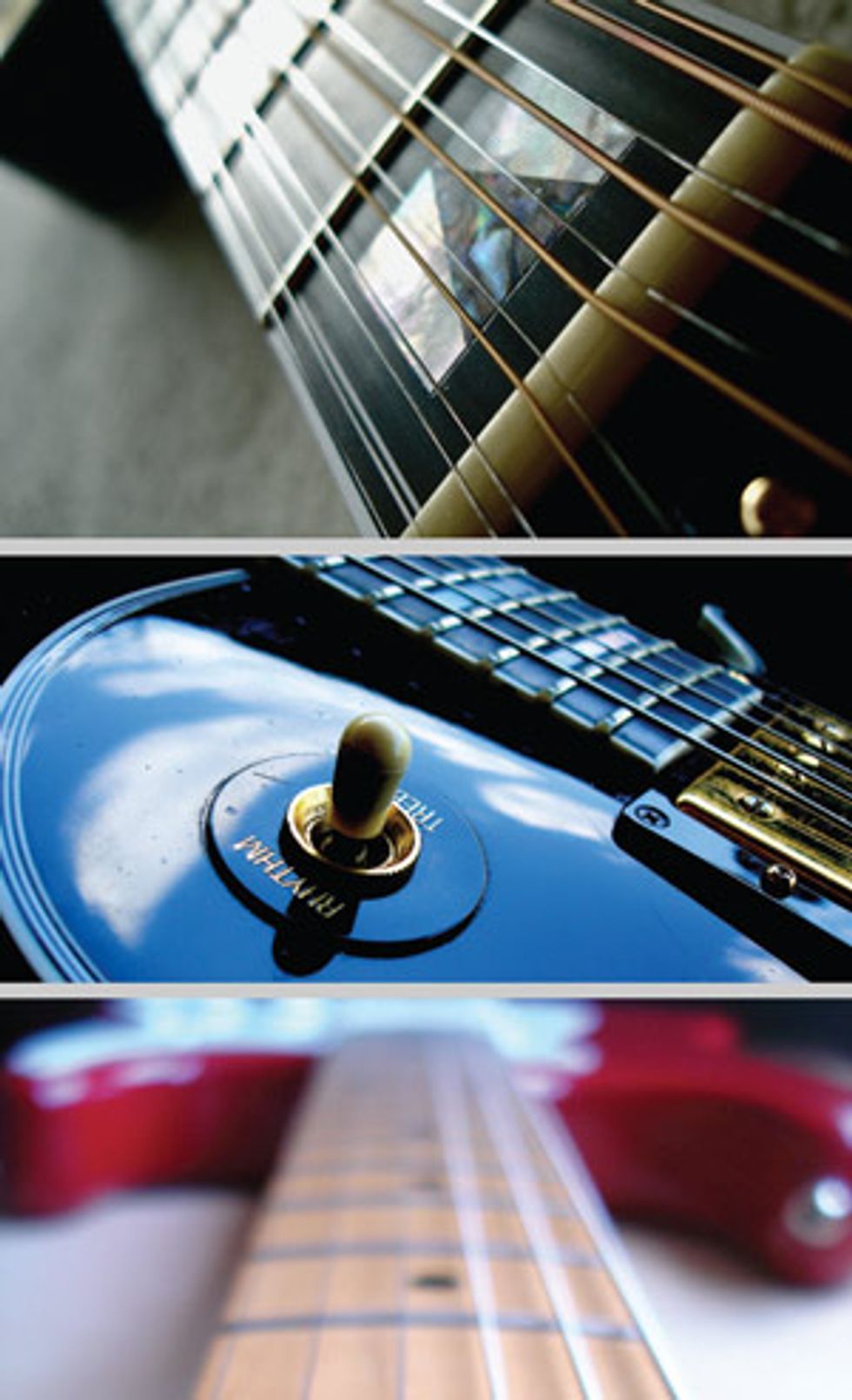
In the studio, selecting the right guitar for the part is more than half the battle. Having a palette of sounds to choose from helps you play to your particular strengths, and the marriage of creative ideas to appropriate instruments is hard to beat. Photos by Rich Tozzoli
I learned long ago that I’m not a fast player. Working with Al Di Meola for many years also helped me realize that! While I never had the ability to burn up the fretboard, that didn’t mean I couldn’t handle my instrument at a high level. One of my primary strengths is the ability to play super tight and funky rhythms. That doesn’t mean I can’t play leads, it’s just that rhythm guitar became my niche. That particular skill I developed by practicing for years with drum machines instead of a metronome. I would always try to time my hits to the snare and overall flow of the hi-hat patterns. Now when I play with drummers who don’t have good time, I go crazy.
That type of rhythm playing also led me to study flatpicking. Realizing that it takes a quick wrist action to flatpick, I’ve developed that as one of my skills. Again, I’m not the best flatpicker around, but I can blow out a few cool licks when need be. That in turn led to some country-blues lessons, and with my early background in Kiss, Aerosmith, Rush, and Zep, my style has become a hybrid of rock, blues, funk, and country. It all comes in handy because in the world of TV music, I sometimes have to call on every style within a single day’s work.
What I’m getting at is this: Be proud of what you’ve got. We all know guitarists who make us want to put down our instrument when we hear them play, but they have their style, and you have yours. Everyone can do something good, even if it’s simple. I have one friend who’s a mid-level player, but his barre chords are amazingly clean and strong. I notice it every time I hear him play. The bottom line is simple: There are infinite forms of expression on the guitar, and we all have certain skills we do better than others.
That brings us to our instruments— the other half of this “play to your strengths” equation. Through experience, I’ve learned which are the best guitars to play for certain styles of music or particular techniques. For example, the scale length and frets on my Les Paul Custom encourage me to bend notes and rip chunky chords. But its neck is wider than my Les Paul Standard, so I’ll use the latter for blues and country licks that require crosspicking or faster runs.
The same principle applies to acoustics. My Martin 000-18 has a much wider neck than my Guild D-66. So, in addition to each instrument sounding quite different, each one excels in different styles. For example, when fingerpicking, I might gravitate toward the wider neck, yet for strumming Townshend-style chords, I’m likely to choose the slimmer neck because it lets me move up and down the fretboard quickly.
Taking this a step further, I play a modified Tele when I gig. One reason is the weight of a Les Paul is not pleasant after the first 45 minutes, and the other is that for me, Teles are more versatile when covering a lot of sonic ground. I can also groove hard when playing rhythm guitar on a Tele and if I do, it sings.
But—and it’s a big but—Teles tend to fight you. They’re harder to play, especially compared to a Les Paul, so you have to work them. Also, because Teles don’t deliver as much sustain on single notes as a Les Paul, I find lead lines don’t have nearly the same impact. Over the years, I’ve developed a way of using fourths and octaves when playing leads on my Tele that compensates for the missing tonality and fills up more sonic space. On the plus side, Teles have a certain clarity other guitars don’t offer.
It’s important to know your strengths and focus on developing them, and along with that, it’s good to learn how to play to the strength of the particular instrument in your hands. Don’t get frustrated by comparing yourself to others. Take the time to learn what guitars work well for your particular style, and then do what you do best.
 Rich Tozzoli is a
Grammy-nominated
engineer and mixer who
has worked with artists
ranging from Al Di
Meola to David Bowie.
A life-long guitarist, he’s
also the author of Pro Tools Surround
Sound Mixing and composes for the
likes of Fox NFL, Discovery Channel,
Nickelodeon, and HBO.
Rich Tozzoli is a
Grammy-nominated
engineer and mixer who
has worked with artists
ranging from Al Di
Meola to David Bowie.
A life-long guitarist, he’s
also the author of Pro Tools Surround
Sound Mixing and composes for the
likes of Fox NFL, Discovery Channel,
Nickelodeon, and HBO.








![Rig Rundown: Russian Circles’ Mike Sullivan [2025]](https://www.premierguitar.com/media-library/youtube.jpg?id=62303631&width=1245&height=700&quality=70&coordinates=0%2C0%2C0%2C0)





